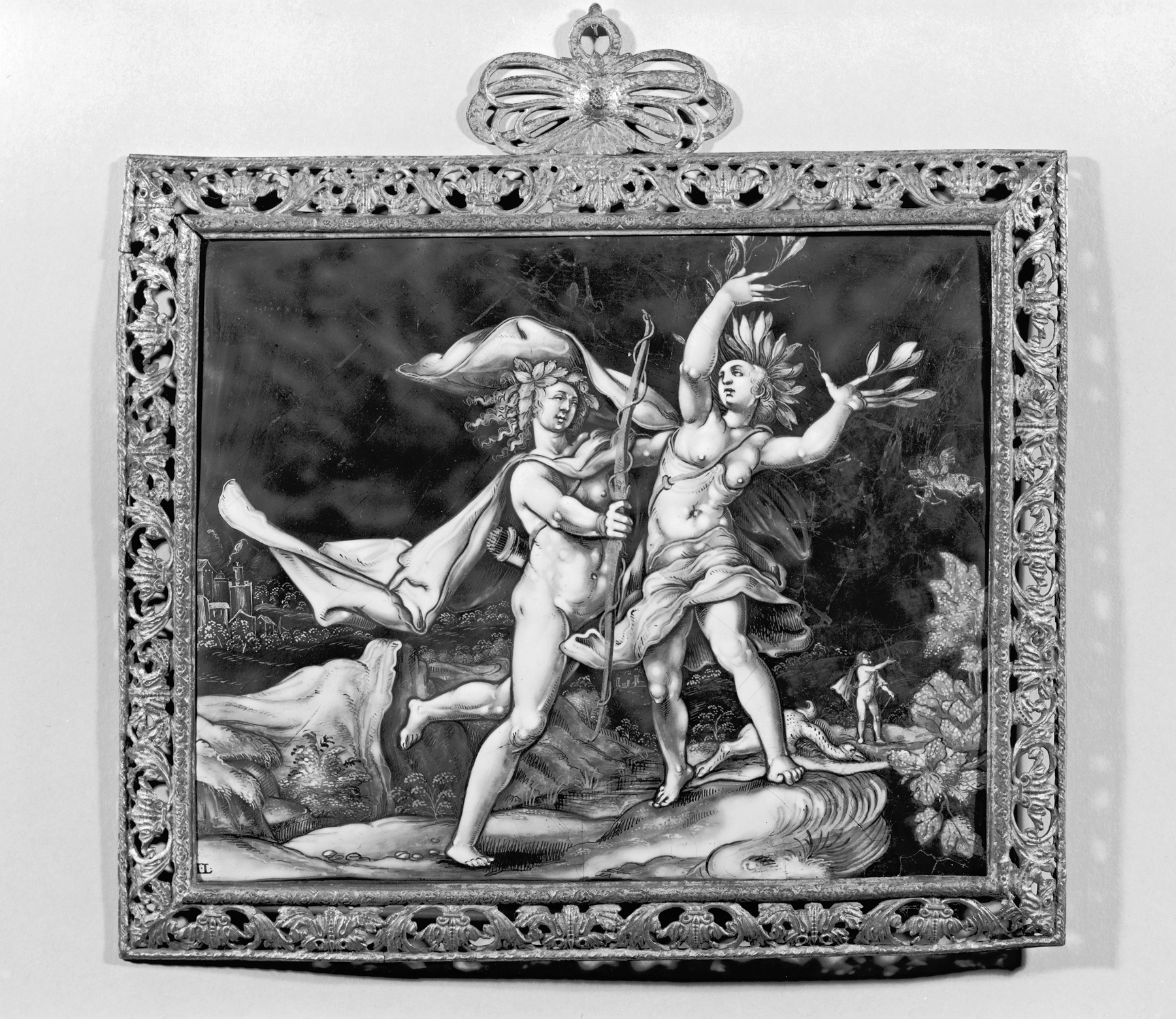Plaque with Apollo and Daphne
(Baroque Europe )
The story of Daphne is told by the Roman poet Ovid (43 BC-AD 17) in "The Metamorphoses." Cupid, god of love, shot the god Apollo with a gold-tipped arrow, kindling his love for the nymph Daphne, but Cupid shot her with one tipped with lead, stifling love. Pursued by Apollo, Daphne prayed to her father, a river god, to save her, and she was transformed into a laurel tree.
Ovid's tales were popular for their eroticism. In addition, the idea of metamorphosis, a fundamental, divinely sanctioned change of state, offered a way of thinking about the creative act, as in the transformation of a chunk of copper ore into a bronze statuette.
Jacques Laudin, who monogrammed this plaque, adapted the composition from an engraving of 1589 after a drawing by the Dutch artist Hendrick Goltzius. The frame is original.
Provenance
Provenance (from the French provenir, 'to come from/forth') is the chronology of the ownership, custody, or location of a historical object. Learn more about provenance at the Walters.
Ralph Bernal [date and mode of acquisition unknown]; Sale, London, March 5, 1855, lot 1530; T. Russell Kent [date and mode of acquisition unknown]; Sale, London, November 24, 1908, lot 71; George Robinson Harding, London [date and mode of acquisition unknown]; Henry Walters, Baltimore, May 21, 1912, by purchase; Walters Art Museum, 1931, by bequest.
Conservation
| Date | Description | Narrative |
|---|---|---|
| 4/22/1964 | Treatment | other |
| 8/28/1975 | Treatment | other |
| 8/28/1975 | Treatment | stabilized |
Geographies
France, Limoges (Place of Origin)
Measurements
H: 6 5/16 x W: 8 1/8 in. (16 x 20.6 cm)
Credit Line
Acquired by Henry Walters, 1912
Location in Museum
Accession Number
In libraries, galleries, museums, and archives, an accession number is a unique identifier assigned to each object in the collection.
In libraries, galleries, museums, and archives, an accession number is a unique identifier assigned to each object in the collection.
44.280


